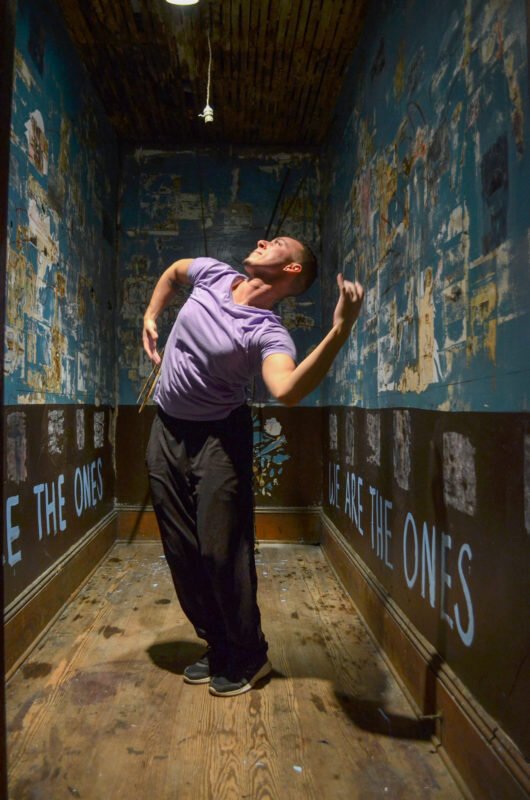Warriors: Beyond Unicorns and Erasures | Daniel B. Coleman
Daniel B. Coleman (Durham + Greensboro, NC / Chiapas, Mexico)
Southern Constellations Fellow. October 2018. Performance and installation documentation. 7 min 14 secs. Gel medium transfers; acrylic; museum collection wardrobe and mirrors; HD video with sound. Dimensions variable.
“Upon reflection, it is easy to understand how Americans come to deny the evils of mass incarceration. Denial is facilitated by persistent racial segregation in housing and schools, by political demagoguery, by racialized media imagery, and by the ease of changing one’s perception of reality simply by changing television channels.” – Michelle Alexander, The New Jim Crow (p182)
“The ungendering of blackness opens onto a way of thinking about black gender as an infinite site of proliferative, constantly revisable reiterations figured ‘outside’ of gender’s established and establishing symbolic order. Its symbolic order, which is simply one articulation of the ordering of things, relies upon gendered others to maintain an epistemological coherence.” – C Riley Snorton, Black on Both Sides (p74)
Warriors is a performance, conversation, and citation of Antoine Williams’s Because They Believe in Unicorns: a 2016 installation that centers the war against Black bodies in response to Alexander’s The New Jim Crow: Mass Incarceration in the Age of Color Blindness. The performance introduces the ongoing war against trans* bodies (also signaling wars against intersex, gender fluid, non-binary, and other-gendered bodies), with an emphasis on the current antagonisms of gender variant bodies of color. In the center of the room, a movement poetry performance of ancestral assignment visualizes a citational matrix of historical realities for Black and trans* bodies performed to Sweet Honey in the Rock’s “I Don’t Want No Trouble at the River,” and fading into Greensboro train sounds. As a mixed-race, Black, transmasculine, non-binary, artist-scholar, Coleman calls on movement repertoires of Black resistance, spoken through him as an ancestral tapestry in-motion.
Coleman also cites Snorton’s text Black on Both Sides: A Racial History of Trans Identity, allowing the ungendering of blackness to move through his dancing body. Part of a larger “Performance as a Research” project, the piece contends with historical geopolitics of blackness and transness that do not rely upon visibility or recognition, acknowledging that such prerogatives participate in legacies of violence and death. Instead, the project looks beyond idealized and inaccurate notions of post-race and gender-inclusive unicorns and instead calls in the layered and dystopic social landscapes through which trans* bodies of color emerge. The project imagines trans* bodies of color who site the layers of historical memory present in any given physical, geographic, and social location. Coleman argues that it is, in fact, trans* bodies that have a particular capacity to feel these layers of history, space, ground, and sociality because of the bodies they inhabit. The first place this project is concerned with is Greensboro.
Within the top 2/3s of the installation space, where the haint blue and magazine layers reside, another layer of images of architectural and Civil Rights history in Greensboro was added to the walls using gel medium transfers. Along the lower portion of the space, images of queer and trans* ancestor-warriors lost in 2018 line the space. Behind the unicorn, a mirror introduces movement to the space. Sky-blue paint has been spilled over the unicorn onto the floor— the sky as we have known it has fallen. “We are the ones: We are Movement. We are living waters. We are rivers.”
Project In Response To: Because They Believe in Unicorns, Revolving Spectrum







